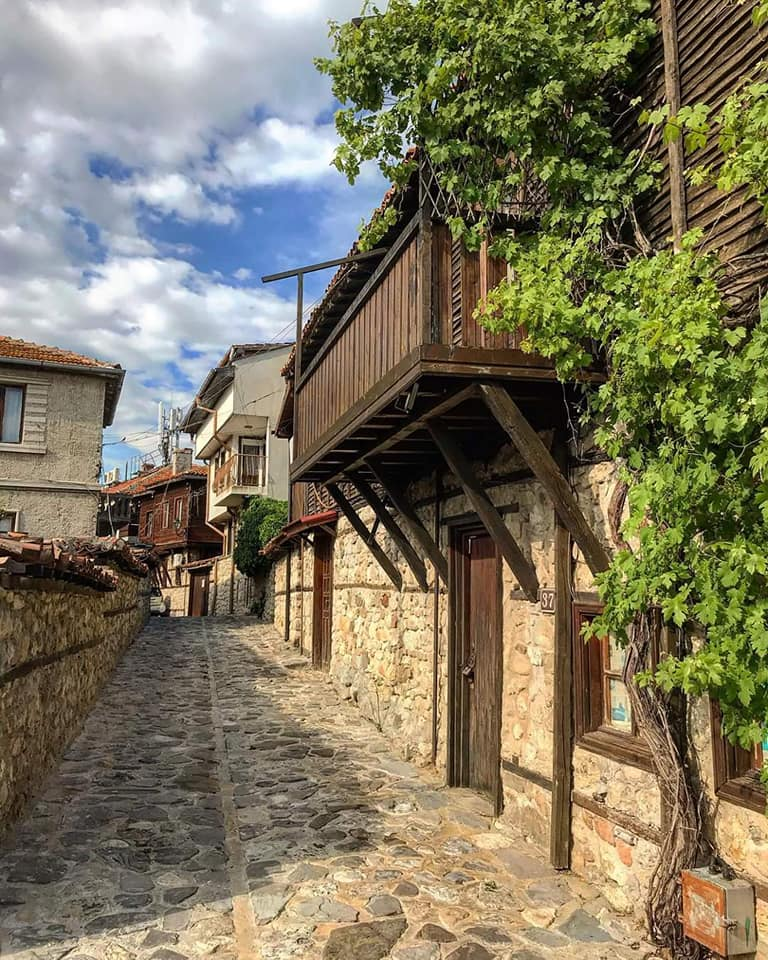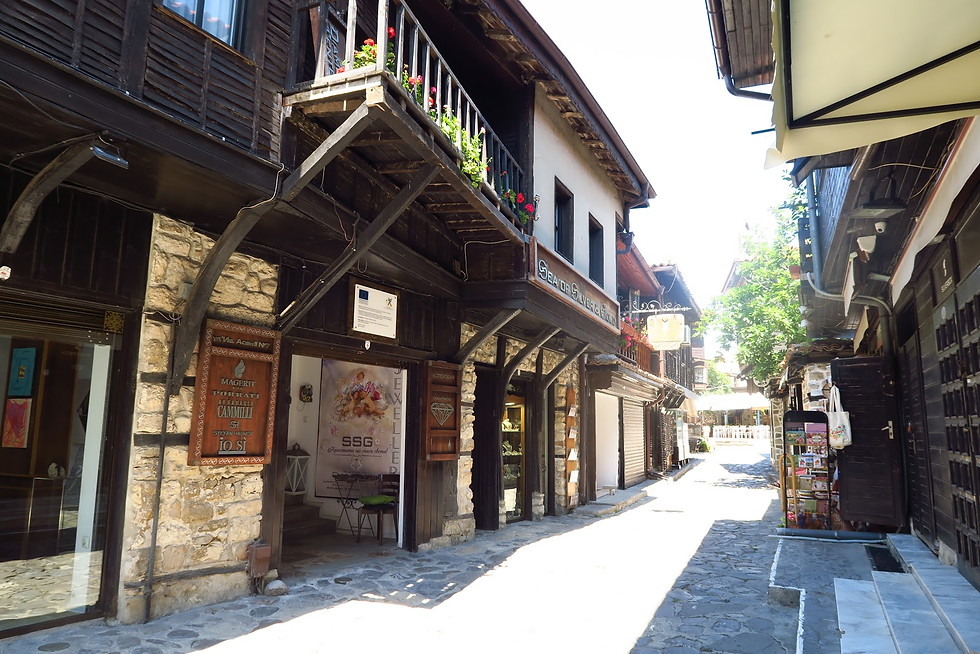Travel to Nessebar, Bulgaria
- AbouTravel.

- May 2, 2022
- 4 min read
Updated: Aug 24, 2025
The town of Nessebar (with a population of 10 000 people) is situated on the Black Sea Shore, 36 km northeast of Burgas. It is close to the popular Bulgarian resort – Sunny Beach.
Due to its unique combination of ancient history, ancient ruins and Revival architecture, the Ancient Nessebar was included to the UNESCO List in 1983.
Nessebar is one of the oldest towns in Europe, established more than 3200 years ago.
The history of the town goes back to the Thracians who settled there at the end of the Bronze Age. They called it Melsambria, which meant the town of Melsas – that was probably the name of the founder of the settlement.
They were succeeded by the Dorians (ancient Greek tribe) who came to the town at the end of the 6th century BC. Under their control, the settlement expanded: a fortification wall was built, residential quarters emerged, etc.
At the beginning of the 1st century AD, the town became part of the Roman Empire. It was then when they started calling it Mesembria. The town continued to be an important economic and cultural centre.
After the capital of the Roman Empire moved to Constantinople and Christianity became the official religion, there was a building boom of Christian temples on the territory of Mesembria.
The town became part of the First Bulgarian Empire in 812 when Bulgarian ruler Khan Krum conquered it.
The Slavs who settled there started calling it Nesebar. The town played a crucial role during the reigns of Tsars (Kings) Kaloyan (1197-1207), Ivan Asen II (1218 – 1241), and Konstantine Tikh (1257-1277).
The town flourished under the rule of Tsar Ivan Alexander (1331 – 1371) – many new churches were built, culture and religion developed.
Nessebar was conquered by the Ottomans in 1453.




Today, the old and the new part of the town are connected by a narrow isthmus. The old town lies on a small peninsula. Because of its exceptional cultural and historical value, Nessebar was declared a museum, tourist and resort complex of international importance, and it was included in the List of World Cultural Heritage Sites of UNESCO.
Tourists can get more information about the history and the development of the town at the Archaeological Museum which is located at the very beginning of the peninsula. It exhibits finds discovered during archaeological excavations.
The traces of past historical periods are everywhere. An important part of the reserve are the remains of fortress walls and the early Byzantine baths.
Part of the fortification wall can be seen in the Old Town. It was declared an architectural-construction monument of culture of national importance. It dates back to the 5-6th centuries.



A number of churches have been preserved and two of them – St. Spas Church and St. Stefan Church, have been transformed into museums.
Walking through the Old town you will pass by several other remarkable ancient churches - St. Sophia Church ( 5-6th century ), St. Paraskeva church (13th century), Christ Pantocrator church (14th century), Archangels Michael and Gabriel church ( 13 century), St. John the Baptist church (10th century), and more.
The church of the Holy Mother of God ( Sveta Bogoroditsa ), built in 1873 is an Orthodox church, and is the only functioning church nowadays in the Old town.




The Old town of Nessebar impresses visitors also with its ancient houses, many of which were built during Bulgaria's Revival Period (18th – 19th centuries). Over 100 houses have been restored.
In the Moskoyani House is housed the Ethnographic Museum of Nesebar. Visitors can learn many facts about the life and the culture of the people of Nesebar. Various everyday objects and traditional costumes are displayed in the museum.




Apart from its ancient historical sites and churches, the Old town consists of a maze of winding cobbled streets lined with charming cafés and restaurants, as well as numerous souvenirs and art shops. You can try delicious seafood and enjoy dining al fresco.
The romantic souls would prefer the restaurants in the Old Town, while young people would have more fun in the new part of Nessebar and the nearby resort of Sunny Beach, which is known for its vibrant nightlife.





The isthmus is a preferred place for strolls of the guests and the citizens of Nessebar. There are pedestrian alleys on both sides of the isthmus, close to the sea. The wind-mill that stands in the middle of the isthmus is another symbol of the town.


In the summertime, various events and concerts are held at the ancient theatre in Old Nessebar. Behind it lies the Nessebar Port where during the active summer season one can often see cruise ships that have stopped by the town.
Visitors who want to capture the spirit of the town can stay in Old Nessebar – there are many accommodation opportunities that vary in type and price – family hotels, private rental rooms, etc.
The new part of Nessebar also offers various accommodation opportunities. The buildings of the town administration and many institutions are situated there. The north and the south beaches of Nessebar lie in the new part of the town. There is a beach in Old Nessebar, but it is a small one.
If you love waterparks, you should visit the Nessebar Aquapark. The large Aquapark offers a great variety of different speedy slides and it's a wonderful place for children and families to spend a day full of fun.
Other places and resorts near Nessebar you may consider visiting include: Sunny Beach, Sveti Vlas, Elenite, Pomorie and the town of Burgas.
*The videos and photos below were made at the beginning of July 2020, in the actual situation of Covid-19 world crisis. In normal times, the place looks much more lively and full of people and life.































Comments